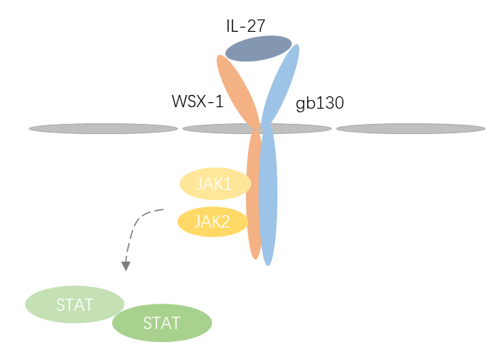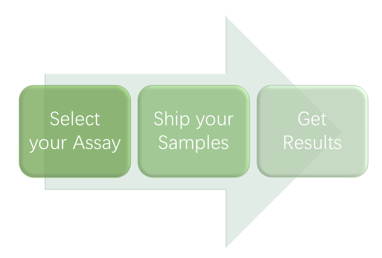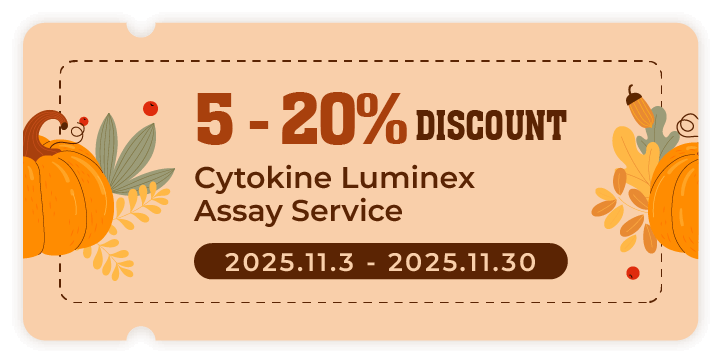Introduction
IL-27, a member of the IL-12/IL-6 family, is produced primarily by antigen-presenting cells and is highest in activated monocytes, monocyte-derived dendritic cells, and activated macrophages. It is expressed in bone marrow cells, dendritic cells (DCs) activated by lipopolysaccharide (LPS), monocytes and macrophages.IL-27 is a heterodimer composed of two polypeptide chains, EBI3 and p28. It can secrete γ-interferon, promote the differentiation of Th1 cells, inhibit the differentiation of Th17 and Th2 and induce regulatory T-cell activity, etc. It plays an important role in the development of inflammatory diseases, anti-tumor immunity and the maintenance of the stability of the internal environment of the body.
Mechanism and Function
The receptor for IL-27 consists of WSX-1h and gb130. The WSX-1 molecule is mainly expressed in peripheral blood lymphocytes, thymus and spleen, with high expression on CD4+ T cells and natural killer (NK) cells, but also on mast cells, monocytes, DCs, and natural killer T cells. WSX-1 and gb130 contain many JAKs-related targets. After binding to the receptor, WSX-1 activates JAK1/2 and then participates in the differentiation of various immune cells through the downstream signal transducer and activator of transcription 1 and STAT3 pathways. IL-27 selectively activates STAT3 in fully activated CD4 T cells and activates both STAT1 and STAT3 in early activated T cells.
There is a link between IL-27 and inflammatory diseases, in the early inflammatory response, IL-27 has the ability to promote the activation and proliferation of T cells, NK cells, mast cells and monocytes to produce inflammatory cytokines and promote the inflammatory response. In autoimmune inflammatory diseases, IL-27 is a cytokine with a dual mechanism of immune promotion and immune suppression, which induces the production of IL-10 involved in the inhibitory effect of IL-27 on IL-17, thereby inhibiting the IL-23/17 axis, and its expression is necessary for the production of IL-17, IL-17F, and IL-23R. IL- IL-27 can prevent T cells from differentiating into Th17, thus having a certain inhibitory effect on inflammation. Increased infiltration of natural killer cells and other methods inhibit the tumor. In addition, IL-27 has a role in parasitic infections and it inhibits T-cell proliferation.
 Fig 1. Mechanism of Signaling
Fig 1. Mechanism of Signaling
Creative Proteomics can provide cytokine detection platform for scientific research. According to different purposes, our dedicated analysts will customize exclusive solutions for you. We aim to provide customers with high-quality and convenient services to help you accelerate the progress of your project.
Our cytokine detection service includes but is not limited to:
- Quantitative and qualitative detection of cytokines in different species
- Quantitative and qualitative detection of cytokine antibodies
- Quantitative and qualitative detection of single/mulltiple cytokines
Sample requirements
- Sample Types-Blood, serum, plasma, cerebrospinal fluid, cell culture supernatant, tissue homogenate, cell culture medium, urine, tumor, etc.
- Sample Volume-It is optimal for at least 200µl of each sample. This volume allows for triplicate testing of each sample.
Our advantages:
- Efficient design: Multiplex reaction detecting in various methods are available, which can be selected according to different samples and requirements.
- Sensitive detection: High-quality antibodies are used in the detection process to improve detection specificity and accuracy.
- Reliable results: The feedback results are professional and efficient.
Technology platform:
We mainly provide the Luminex cytokine detection platform. Luminex uses fluorescently encoded microspheres with specific antibodies to different target molecules. The different microspheres can be combined freely to a certain extent so that up to 100 analytes can be tested multiple times simultaneously in a single experiment.
The Luminex cytokine assay platform has the following advantages:
- Multiple detection: simultaneous detection of 100 biological targets
- Short experiment time: 1-3 weeks
- High sensitivity: the lower limit of accurate quantification is as low as 0.1 pg/mL
- Save samples: only need a sample volume as low as 25 μL
- Time saving: the experiment process only takes 4 hours
For your different needs, we can also provide the following detection methods:
- Enzyme-linked immunosorbent assay (ELISA)
- Flow cytometry
Workflow

For more information about the IL-27 detection service or need other detection requirements, please contact us.
References:
- Kastelein R A, Hunter C A, Cua D J. Discovery and biology of IL-23 and IL-27: related but functionally distinct regulators of inflammation. Annual Review of Immunology, 2007, 25(1):221-242.
- Shahi A, Afzali S, Salehi S, et al. IL-27 and autoimmune rheumatologic diseases: The good, the bad, and the ugly. International Immunopharmacology, 2020, 84:106538.



